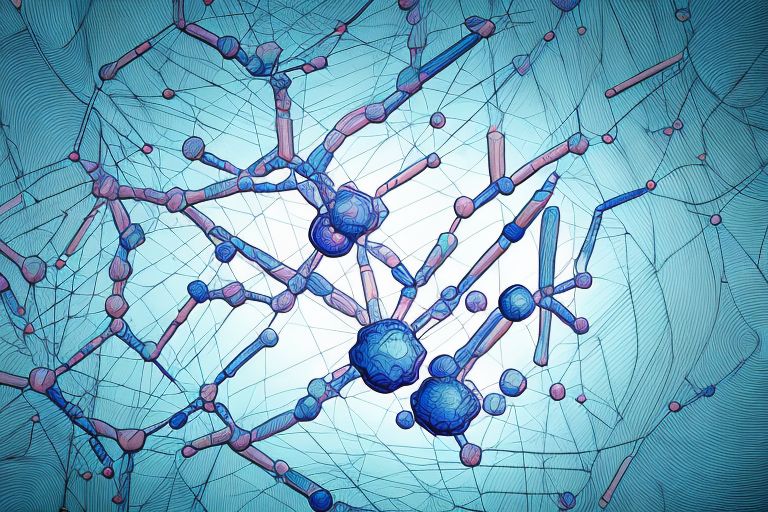Appendicular Lean Mass and AMLI/Longevity


Appendicular Lean Mass and AMLI/Longevity
In the pursuit of healthy aging, understanding the role of appendicular lean mass is crucial. It is not just about looking fit, but about promoting longevity and overall well-being. This article aims to shed light on the significance of appendicular lean mass and its connection with AMLI (Appendicular Lean Mass Index) and longevity. By grasping this knowledge, individuals can make informed choices to enhance their lean mass and improve their chances of healthy aging.
Understanding Appendicular Lean Mass
Before delving into the connection between appendicular lean mass and longevity, it is important to have a clear understanding of what appendicular lean mass actually is. In simple terms, it refers to the amount of muscle mass in the arms and legs. While it is well-known that muscle plays a crucial role in movement and strength, its importance goes beyond just physical appearance.
Definition and Importance of Appendicular Lean Mass
Appendicular lean mass encompasses all the muscles in the arms and legs, such as the biceps, triceps, quadriceps, and hamstrings. Maintaining an adequate amount of lean mass is essential for various reasons. Firstly, it contributes to overall strength and mobility, allowing individuals to perform daily activities with ease. Whether it's carrying groceries, climbing stairs, or playing with grandchildren, having sufficient appendicular lean mass ensures that these tasks can be accomplished without undue strain or fatigue.
Secondly, lean mass also plays a crucial role in metabolic health, as muscles are known to burn more calories than fat. This means that individuals with a higher amount of appendicular lean mass have a higher resting metabolic rate, which can aid in weight management and overall energy expenditure. Additionally, muscle mass is associated with improved insulin sensitivity, reducing the risk of developing conditions such as type 2 diabetes.
Finally, increasing evidence suggests that appendicular lean mass is associated with longevity, making it a key factor in healthy aging. Research has shown that individuals with higher muscle mass tend to have a lower risk of mortality, particularly from cardiovascular disease and cancer. This may be due to the protective effects of muscle on overall health, including improved immune function and reduced inflammation.
Measuring Appendicular Lean Mass
Accurately measuring appendicular lean mass is essential to gain insights into one's muscle composition. Dual-energy X-ray absorptiometry (DEXA) is the most common method used to determine appendicular lean mass. This non-invasive imaging technique provides a detailed assessment of muscle mass in specific regions of the body. By analyzing the scan results, healthcare professionals can identify any deficiencies in lean mass and guide individuals towards appropriate interventions.
However, DEXA scans are not the only method available for measuring appendicular lean mass. Other techniques, such as bioelectrical impedance analysis and ultrasound, can also provide valuable information about muscle mass. These methods are often more accessible and cost-effective, making them suitable alternatives for individuals who may not have access to DEXA scans.
It is important to note that measuring appendicular lean mass is not just limited to clinical settings. With the advancement of wearable technology, individuals can now track their muscle mass at home using devices such as smart scales and fitness trackers. These devices utilize bioimpedance technology to estimate muscle mass based on electrical signals passing through the body. While these measurements may not be as accurate as those obtained through medical imaging, they can still provide valuable information for individuals looking to monitor their muscle health.
The Connection Between Appendicular Lean Mass and Longevity
While the impact of muscle mass on physical strength and mobility is well-established, research has recently focused on its association with longevity. Several biological mechanisms have been suggested to link lean mass to extended lifespan.
Biological Mechanisms Linking Lean Mass and Longevity
One potential mechanism is the protective effect of muscle against chronic diseases. Maintaining adequate lean mass can help reduce the risk of various conditions such as cardiovascular disease, diabetes, and osteoporosis. Additionally, muscles have a higher metabolic rate compared to fat, meaning they can help regulate glucose and lipid metabolism, promoting overall metabolic health.
Epidemiological Evidence of the Connection
Epidemiological studies have also provided substantial evidence supporting the relationship between appendicular lean mass and longevity. These studies have shown that individuals with higher amounts of muscle mass tend to have a lower risk of mortality and age-related diseases. Furthermore, maintaining lean mass has been associated with improved functional capacity and quality of life in older adults.
AMLI as a Predictor of Longevity
As research on the connection between appendicular lean mass and longevity advances, the concept of AMLI has emerged as a potential predictor of lifespan.
The Concept of AMLI
AMLI, or Appendicular Lean Mass Index, is a standardized measure that takes into account an individual's body size when evaluating muscle mass. It is calculated by dividing appendicular lean mass by height squared. A higher AMLI value indicates a greater proportion of lean mass relative to body size.
AMLI and Its Predictive Value for Longevity
Studies have shown that a higher AMLI is associated with a reduced risk of mortality and improved outcomes in older adults. Those with a higher AMLI tend to have better overall health and functional capacity. Therefore, monitoring AMLI can be a useful tool to assess an individual's risk of age-related diseases and to implement appropriate interventions to promote healthy aging.
Strategies to Increase Appendicular Lean Mass
Now that we understand the importance of appendicular lean mass in promoting healthy aging, it is essential to explore strategies to increase lean mass.
Nutritional Approaches for Lean Mass Enhancement
A balanced diet that includes adequate protein intake is crucial for lean mass enhancement. Protein is the building block of muscles and is necessary for muscle tissue repair and growth. Incorporating lean sources of protein such as chicken, fish, eggs, and legumes into the diet can help support muscle development. Additionally, consuming a variety of fruits, vegetables, and whole grains provides essential nutrients and antioxidants that promote overall health.
Exercise and Physical Activity for Lean Mass Growth
Engaging in regular resistance exercise is key to building and maintaining lean mass. Resistance training, such as lifting weights or using resistance bands, stimulates muscle growth by causing micro-tears in the muscle fibers. These fibers then repair and become stronger, leading to gains in lean mass. Additionally, engaging in aerobic exercise, such as brisk walking or cycling, can support overall physical health and contribute to lean mass preservation.
Implications for Aging and Longevity
The significance of appendicular lean mass in healthy aging cannot be understated.
The Role of Lean Mass in Healthy Aging
As individuals age, they naturally experience a decline in muscle mass. This phenomenon, known as sarcopenia, can lead to decreased strength, mobility, and overall functional independence. However, by taking proactive steps to maintain and increase lean mass, individuals can offset the effects of sarcopenia and improve their chances of healthy aging. By promoting muscle health, individuals can enhance their overall well-being and quality of life as they age.
Future Directions in Longevity Research
As the field of longevity research continues to advance, there is still much to uncover regarding the intricate relationship between appendicular lean mass, AMLI, and longevity. Ongoing studies aim to further explore the underlying mechanisms, develop interventions to promote healthy aging, and identify potential targets for therapeutic interventions. The findings from these studies will undoubtedly shape future approaches to overall health and longevity.
Tracking your body composition, including appendicular lean mass, is essential for understanding your health and progress over time. BodySpec's affordable DEXA scans offer a comprehensive assessment of body fat, muscle mass, and bone health. By monitoring lean mass through regular scans, individuals can effectively track their progress, make evidence-based adjustments to their lifestyle, and enhance their chances of healthy aging.


